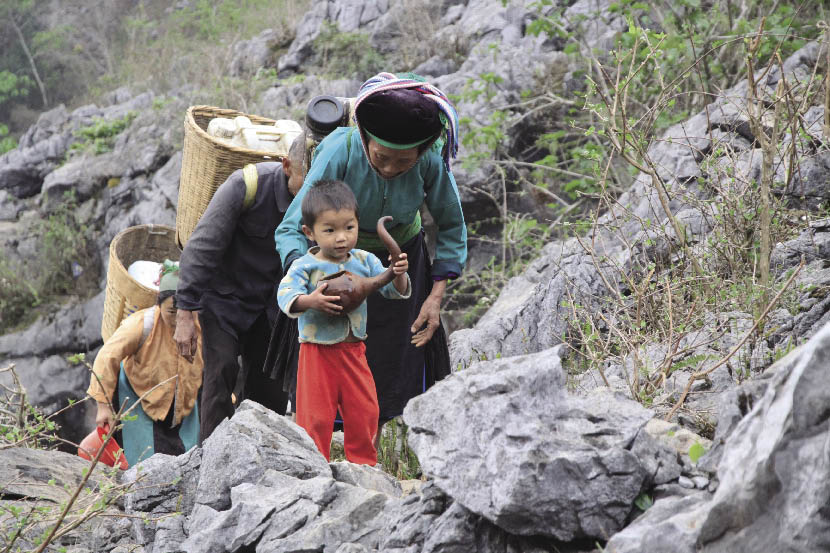A Fight That Cannot Be Lost
By staff reporters ZHANG XUEYING & JIAO FENG
A rare drought plagued southwestern China for the first half of this year. In Yunnan and Guizhou provinces and Guangxi Zhuang Autonomous Region rainfall was merely half the average level for that time of year, leading to a record-low drawdown in local rivers. More than 16 million people and 11 million heads of livestock were craving water, and 43.48 million hectares of farmland were affected. All told, the direct economic losses inflicted have reached RMB 19 billion. Wenshan Zhuang and Miao Autonomous Prefecture in southeastern Yunnan was among the worst hit areas: 1.13 million of its 3.4 million population face water shortages.
 |
| Women and children are no rare sight in the water-hunting expeditions. Liu Hongze |
IELDS are covered in a network of yawning cracks and parched woods stand lifeless – painful reminders of the absolute absence of rain for a full nine months. "If no rain shows up at the start of the wet season in late May or early June, things will get worse: a food crisis will complicate the water shortage," said Wu Shenghua, deputy chief of the water management authority of Wenshan, who also directs the local Flood Control and Drought Relief Command. The weariness on his face confirmed the man hadn't had a good night's sleep since February. "I feel like falling asleep whenever I sit down. But when I finally lie down to sleep, a sea of figures flash across my mind, ruining any attempt," Wu said.
Wu and his fellows are in a desperate battle with a drought the likes of which have not been seen for a century. "It has never been so hot here," Li Guorong squatted by his field, his slight figure casting a thin shadow under the blinding sun. "The crops should have been as tall as a man by this time of the year. But nothing has come out yet so far." The agricultural department estimated that the prefecture lost 80 percent of its spring harvest of rape and pea and the drought-caused losses in farming, forestry and livestock sectors added up to more than RMB 2 billion. If the area is not well moistened by early June, the autumn harvest will be ruined too.
Unprecedented Severity
Unlike most regions in China, Wenshan has only two seasons – dry and wet. In the period from November to the next April the prefecture averagely receives merely 13 percent of its annual rainfall. For generations local residents have been coping with this cycle, and learnt to keep life going in the dry months. "For the months before and after the Spring Festival we always have to ferry water from a well two hours away by walk from the village," said Luo Zhengwen, a 21-year-old Miao ethnic minority in Shangwan Village, Malipo County. "That's the yearly routine, so we are accustomed to it. But the well is dry this year, forcing us to search for other water resources in further away areas. Nobody expected a drought as protracted as this one."
|
